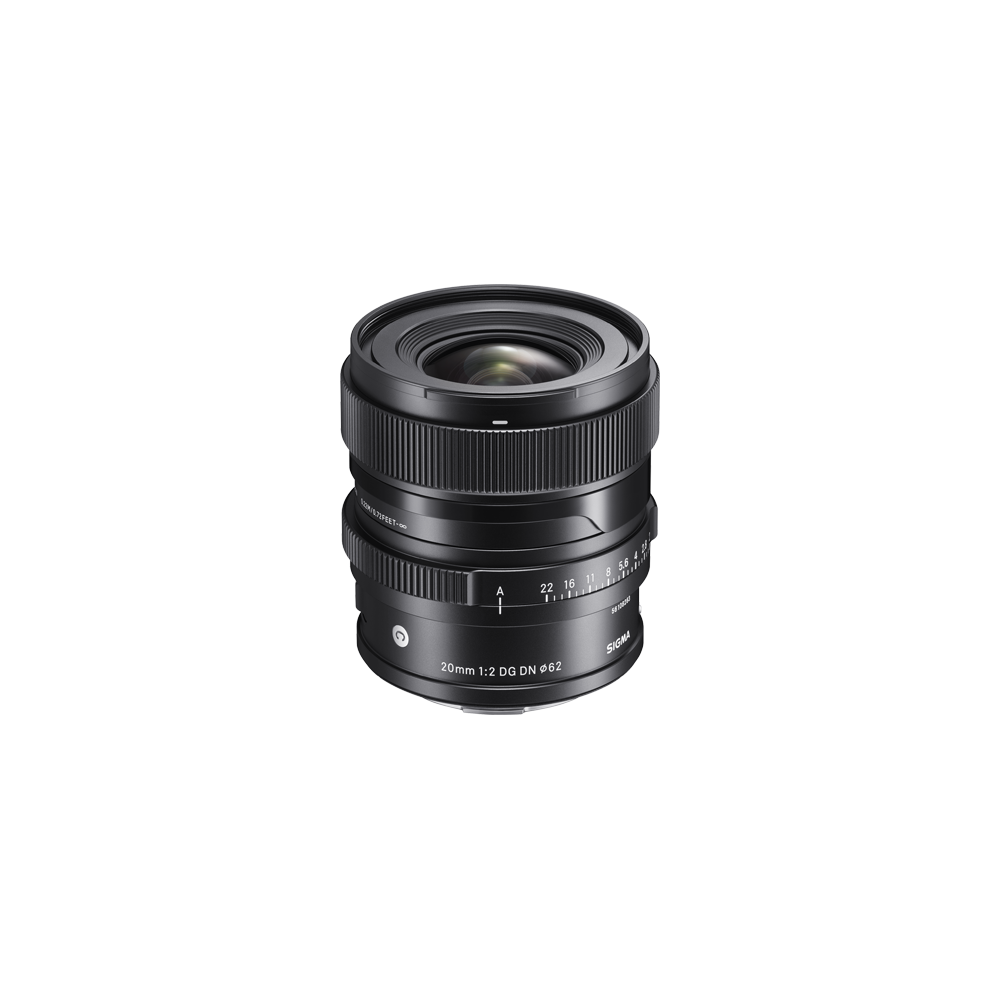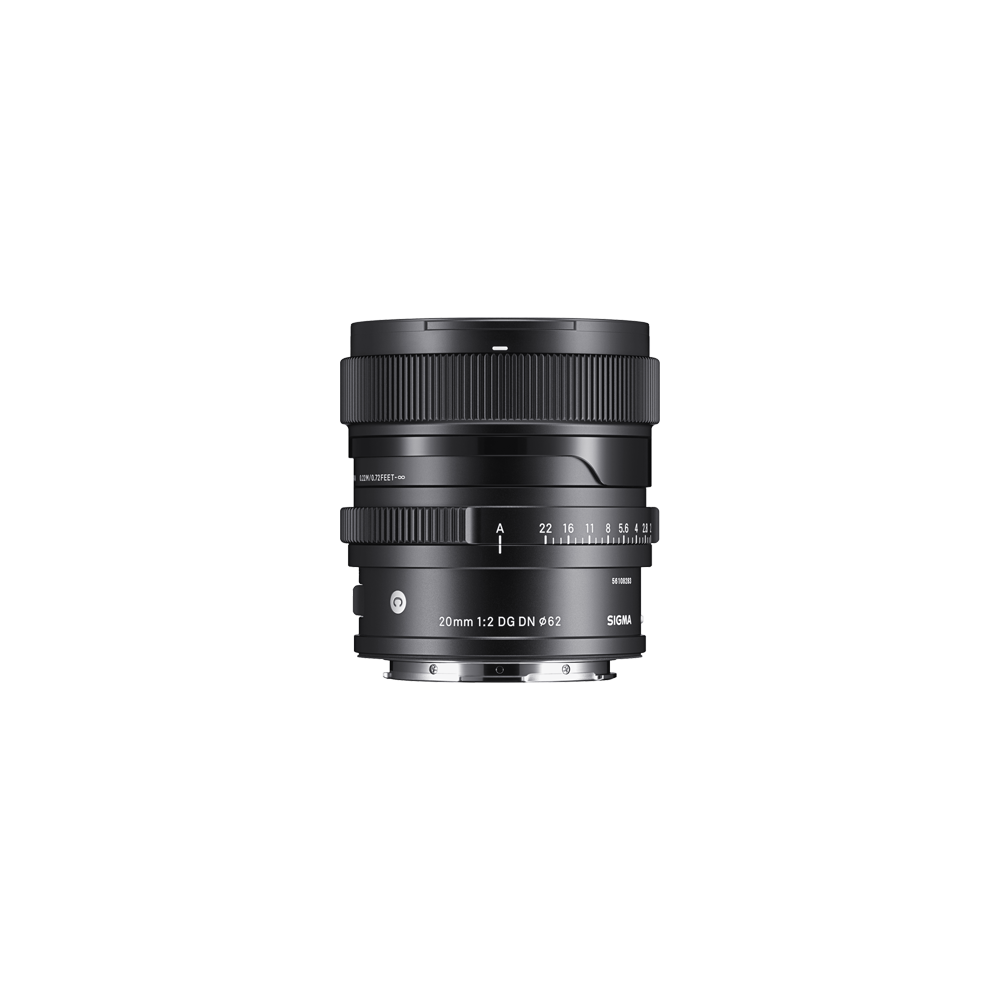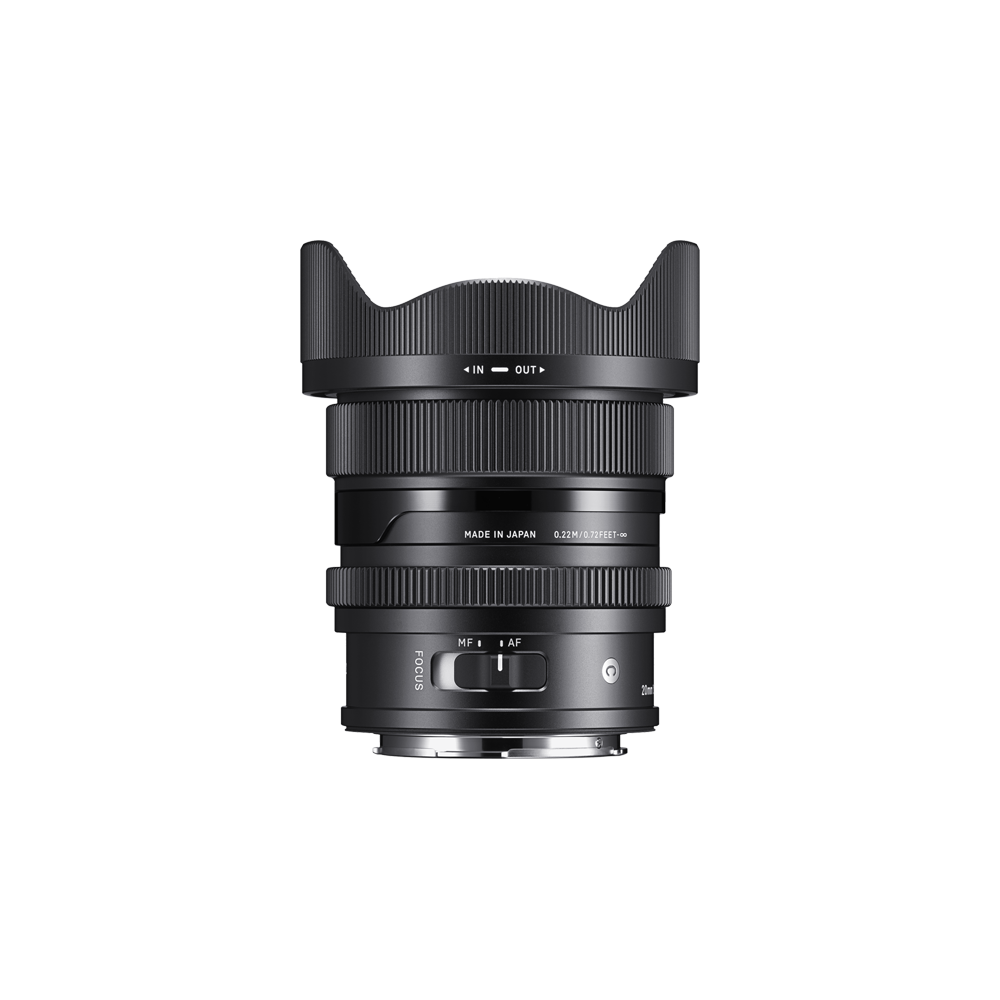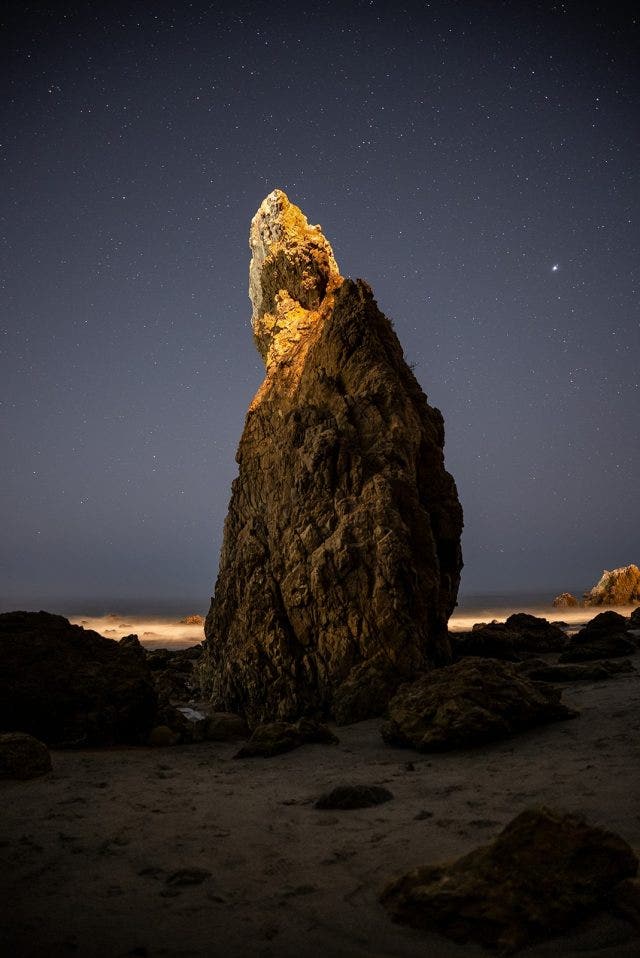20mm F2
DG DN
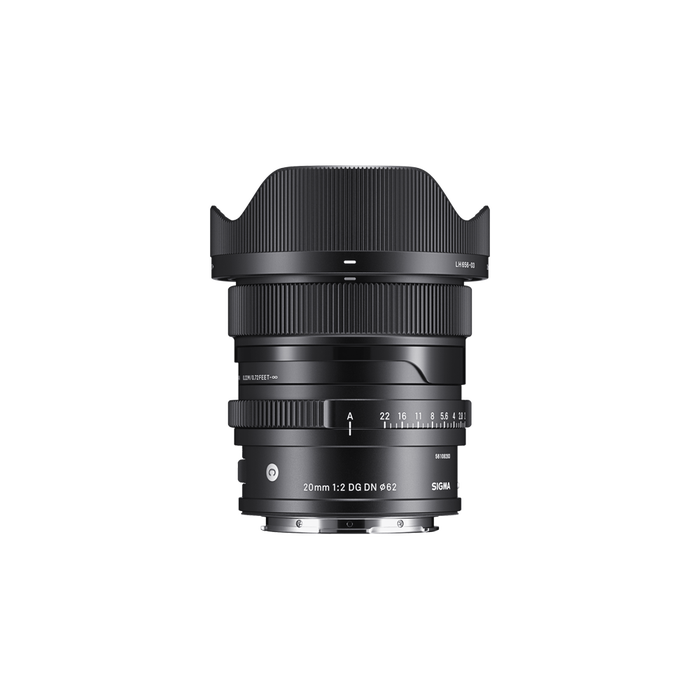

- All-metal construction
- Manual aperture ring
- Arc-style focus mode switch
- High-speed, accurate autofocus
- Magnetic lens cap and metal lens hood
- Mount with dust and splash-resistant structure
- Designed to minimize flare and ghosting
- Compatible with Lens Aberration Correction*
AWARDS
|
TIPA |
2022 |
|
EISA |
2022 |
|
LUCIE TECHNICAL AWARD |
2022 |
| Angle of view | Wide Angle |
|---|---|
| Camera Type | Mirrorless |
| Lens Mount | L-Mount, Sony E-mount |
| Sensor Size | Full Frame |
| Construction | 13 elements in 11 groups |
| Angle of view | 94.5 (Full-frame), 70.7° (APS-C) |
| Number of diaphragm blades | 9 (rounded diaphragm) |
| Minimum aperture | F22 |
| Minimum focusing distance | 22 cm |
| Maximum magnification ratio | 1:6.7 |
| Filter diameter | ⌀ 62mm |
| Dimensions (diameter x length) | L-Mount ⌀ 70 mm x 72.4 mm |
| Weight (g) | 370 g |
| Edition number | C022 |
| Supplied Accessories | Magnetic Metal Lens Cap LCF62-01M, Front Cap LCF-62 Ⅲ, Petal-Type Lens Hood LH656-03, Rear Cap LCR II |
| Accessories | SIGMA USB Dock UD-11 (L-Mount), SIGMA WR Protector 62mm, SIGMA Protector 62mm, SIGMA WR UV Filter 62mm, SIGMA WR Circular PL Filter 62mm |
| EAN-code | L-mount 085126490690 |
| Specifications Info | * This product is developed, manufactured and sold based on the specifications of E-mount which was disclosed by Sony Corporation under the license agreement with Sony Corporation. |
I series “Premium Compact Primes” for mirrorless users
The Sigma I series features full-frame compatible lenses that offer new value to mirrorless systems. The combination of superb optical performance with a level of compactness that is perfectly suited to smaller and lighter modern mirrorless cameras will bring you new opportunities for a perfect shot.
Sigma is aware that in today’s world we have a wide range of camera choices, especially with the increase in mobile phone ownership. But with many photographers looking for something more than something that simply captures images when they choose to own a camera and lens, I series lenses offer the ultimate combination of superb optical performance, outstanding usability and compact form-factor.
Sigma’s excellence in development and production technologies has been built up since our founding in 1961 and became increasingly sophisticated with the introduction of the Sigma Global Vision brand in 2012. With this as a base, Sigma has given careful thought to the quality of the products, the feeling of using it and the pleasure of owning it. This is how the I series was born.
20mm, 24mm, 35mm ,50mm and 65mm five lenses with F2 brightness in the lineup
New standards of optical performance for the Contemporary line
The 20mm F2 DG DN | Contemporary achieves the highest level of optical performance even at the widest aperture setting of F2 from the center of the image to the periphery. Based on the latest optical design technology, the lens construction includes three high-precision glass-molded aspherical lens elements, one SLD element, and one FLD element to suppress a range of optical aberrations. The result is clear and sharp images even in the extreme corners of the frame. By focusing on the suppression of sagittal coma flare, which is difficult to correct in post-processing, accurate reproduction of very bright points of light has been achieved. This also provides extremely detailed results across the entire image, which is especially important for night sky photography.
The lens’ optical design, as well as its Super Multi-Layer Coating and Nano Porous Coating (NPC), ensures very minimal flare and ghosting even when shooting into bright light sources. This makes it much easier to photograph backlit subjects and still achieve punchy, high contrast results.


Use of multiple high-precision aspherical glass molded lenses
The surface of molds for glass molding, which is a process that forms optical components by pressing glass materials at high temperatures, requires ultra-high precision. Sigma uses high-precision molds whose surfaces are controlled with an accuracy of ±5 nanometers (0.000005 mm) or smaller. High precision aspherical glass molded lenses archives both good aberration correction and compact lens size.


Sigma’s unique coating technology Nano Porous Coating
The super multi-layer coating is combined with Sigma’s unique coating technology “NPC (Nano Porous Coating)”. The lens has been designed to be less susceptible to strong incident light such as backlight.
“NPC (Nano Porous Coating)” incorporates porous silica as the coating material. The porous silica layer has nano-sized holes with air inside. Having holes of this size enables a large reduction in the refractive index, allowing the reflectance to be lowered more than conventional anti-reflective coatings. As a result, reflected light causing flares and ghosting is sharply reduced, achieving clear image quality.
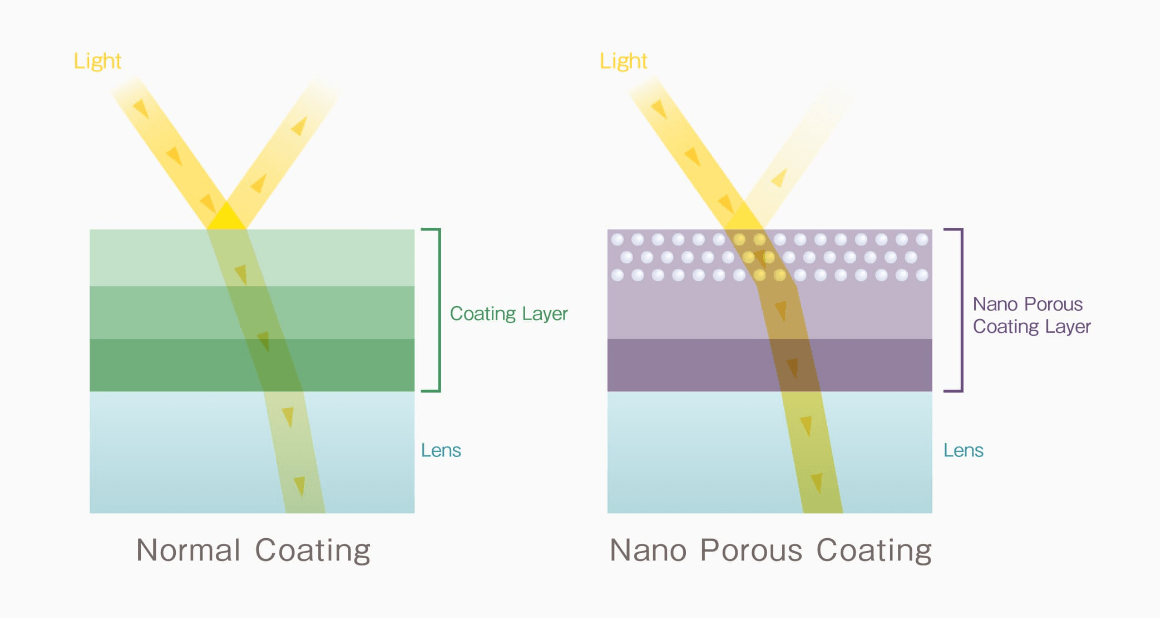

Exceptional I series build quality with a compact form-factor
All I series lenses have an all-metal construction. The precision-cut aluminum parts not only give the barrel a sleek, stylish finish, but provide superb durability that improves the quality of the entire product. Metal materials are also used in internal structures that slide with the operation ring for added robustness. These high-precision components crafted with Sigma’s cutting-edge metalworking technology are also used in Sigma’s CINE LENS line-up for professional cinematographers and provide a tactile, ergonomic feel that make the lens a pleasure to use.
The cover ring between the focus ring and the aperture ring has hairline processing that is also used for the rear cylinder of the Art line. This covering functions as a finger hold when attaching or detaching the lens.
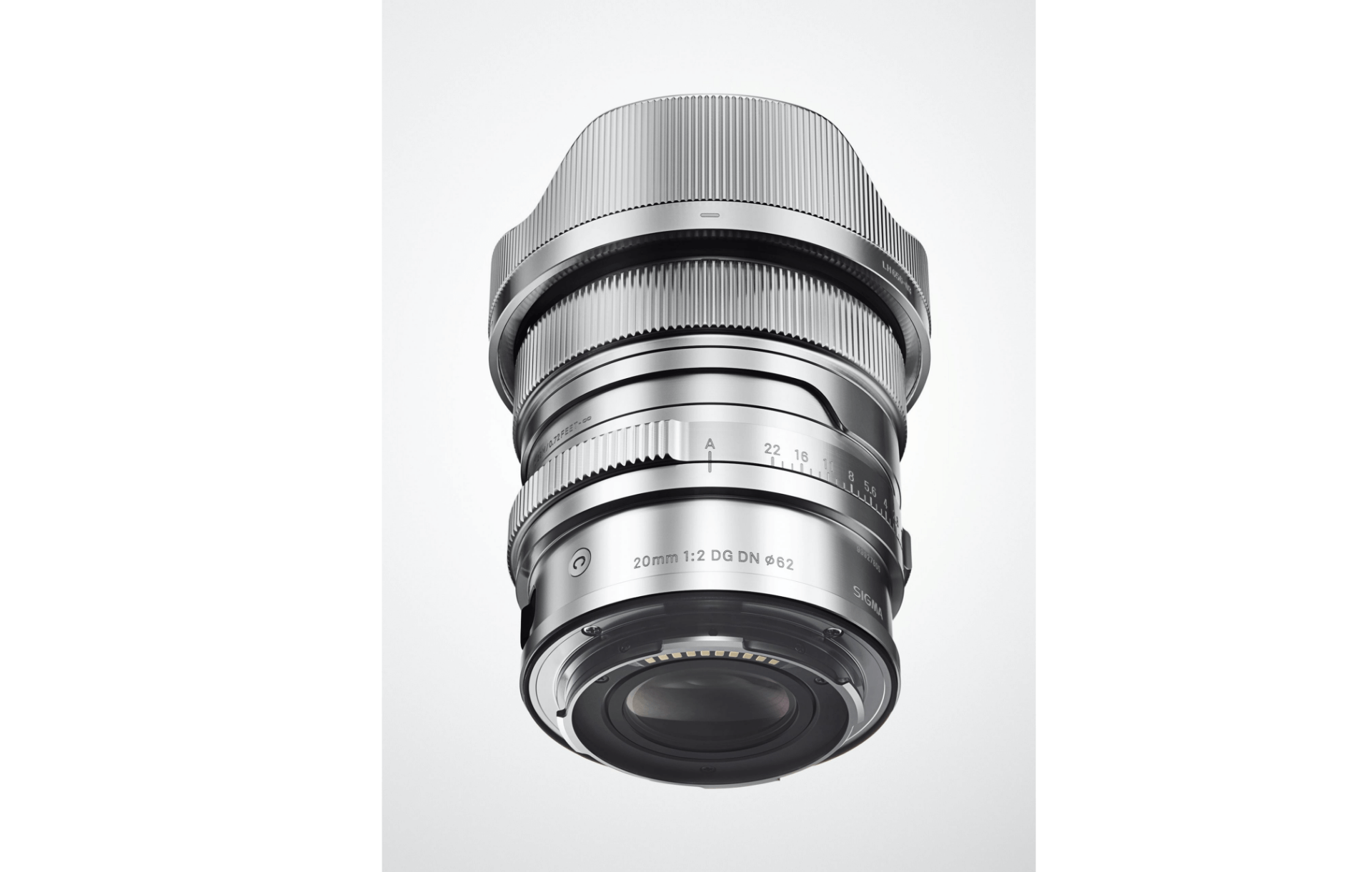

Magnetic metal lens cap
I series lenses are accompanied by a dedicated magnetic metal lens cap*, in addition to a normal plastic cap. This dedicated metal cap clips to the front surface of the lens magnetically. It is no exaggeration to say that this meticulously crafted cap represents the finishing touch for the I series.
*Except Sigma 45mm F2.8 DG DN | Contemporary
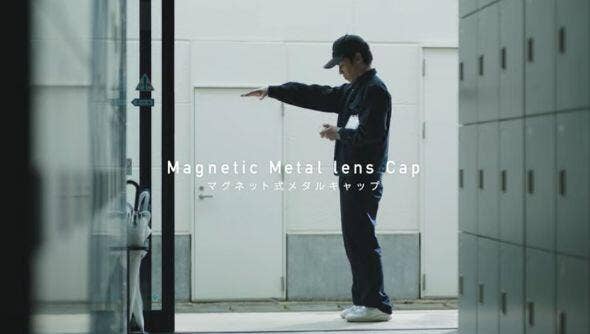

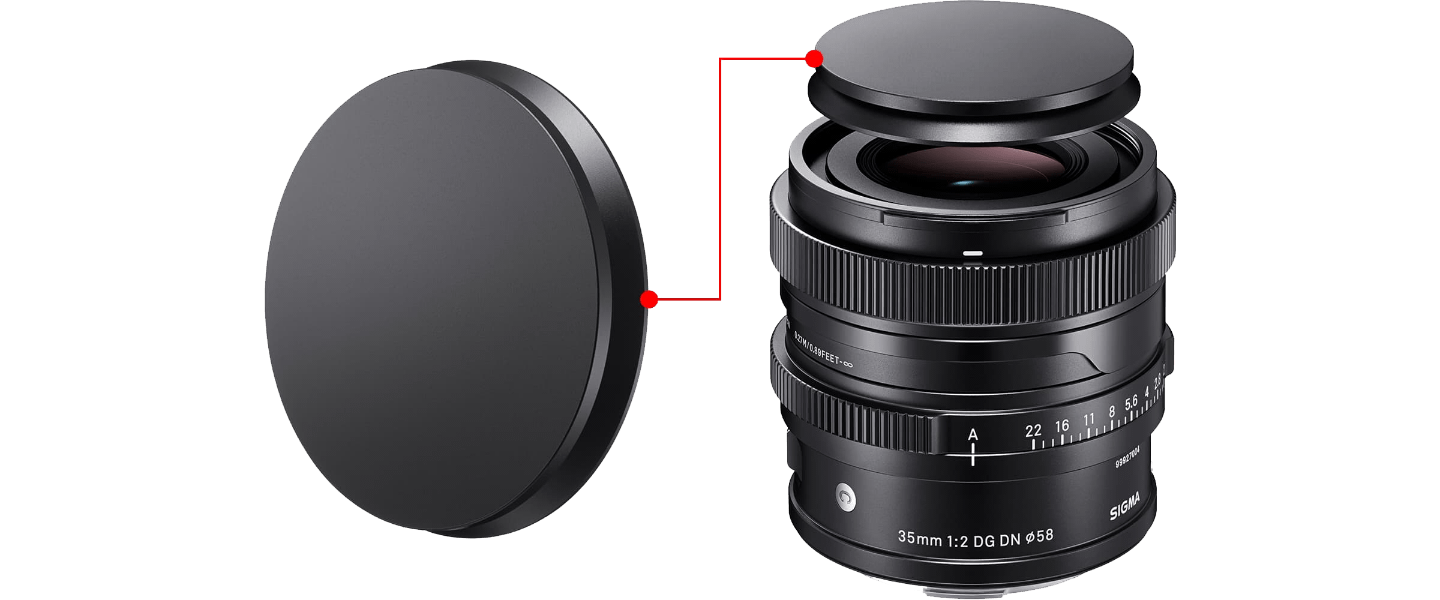

※ The image is 35mm
※ Cannot be used when a filter is attached.
Magnetic metal lens cap holder LENS CAP HOLDER CH-11 (sold separately)
When a cap is removed from the lens it should have a proper place where it can be kept. Using this as a starting point, a cap holder using the magnetic force of the dedicated cap was created.
With the cap attached to the ring plate, and the plate clipped to a bag or belt, the cap is always within easy reach and is less likely to get lost. Plus, its elegant design is a stylish addition to a photographer’s equipment.
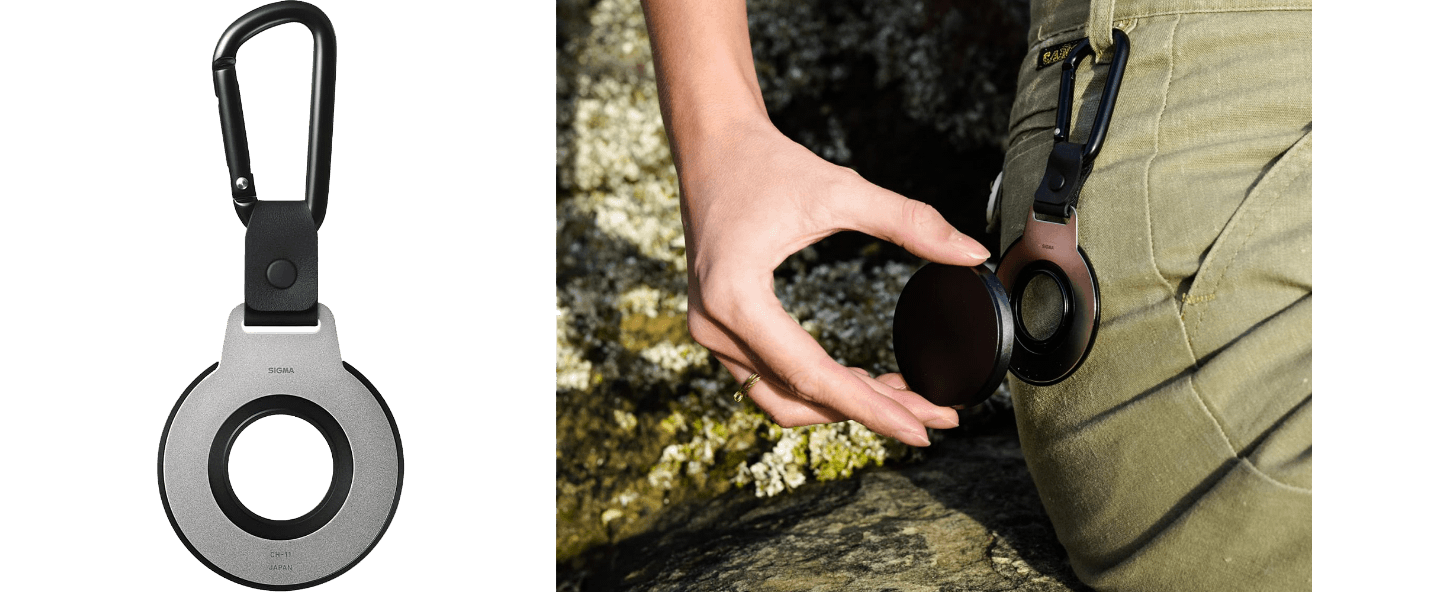

LENS CONSTRUCTION
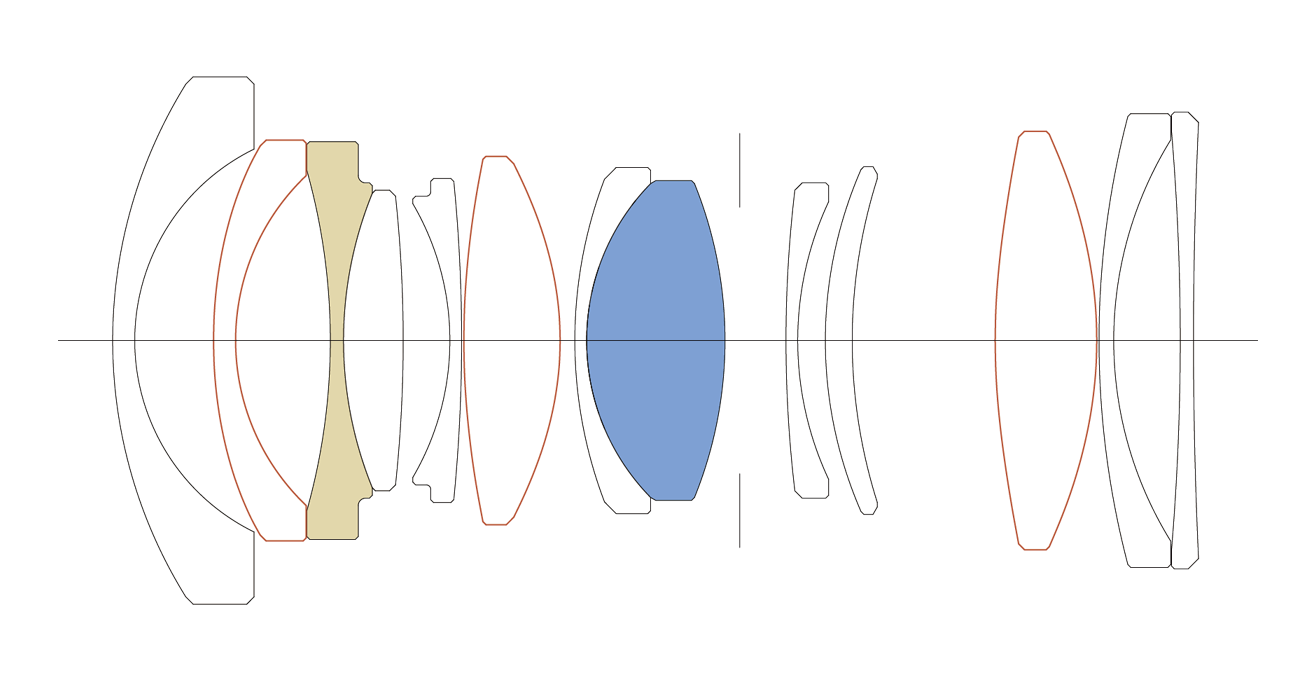

|
|
|
|
|
MTF CHART
The MTF (Modulation Transfer Function) is one of the measurements for evaluating a lens’ performance, and it shows how faithfully the contrast of the subject can be reproduced on the image plane. The horizontal axis shows the image height (distance from the center of the image in mm) and the vertical axis shows the contrast value (maximum value is 1).
The closer the 10 line pairs/mm curve is to 1, the higher the contrast and clarity of the lens is, and similarly, the closer the 30 line pairs/mm curve is to 1, the better the resolution and sharpness of the lens is.
*The MTF chart depicts the result at the wide-open aperture.
*For mirrorless lenses that support distortion correction, the horizontal axis shows the image height equivalent to when an L-Mount lens is attached to a Sigma L-Mount camera with distortion correction applied. (The effect of distortion correction may differ depending on the mount and camera used.)
*The spatial frequency indicates the variation on the image plane before distortion correction is performed.
|
Spatial frequency |
S:Sagittal Line |
M: Meridional Line |
|
10lp/mm |
|
|
|
30lp/mm |
|
|
DIFFRACTION MTF
DIFFRACTION MTF
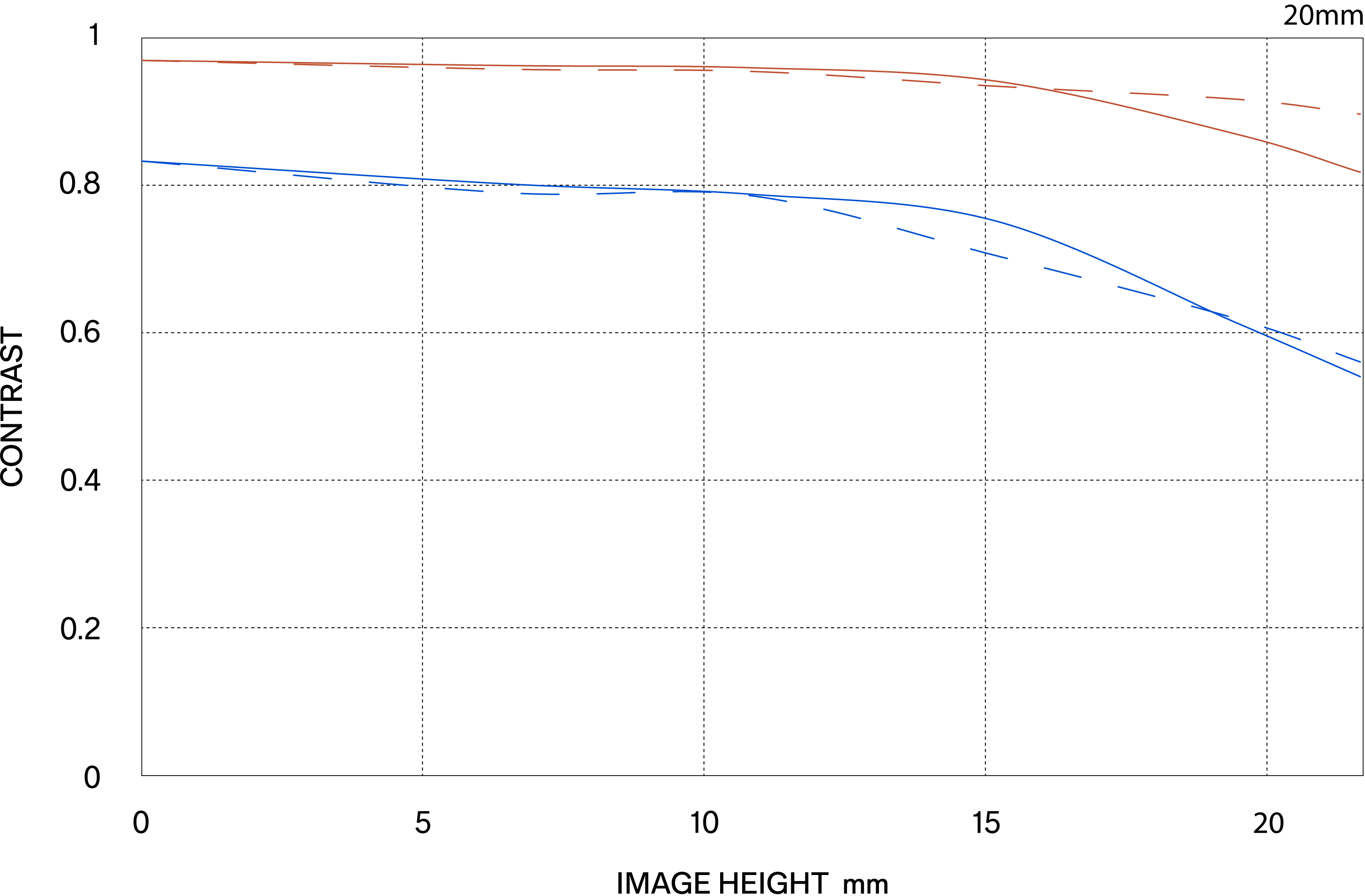

GEOMETRICAL MTF
GEOMETRICAL MTF
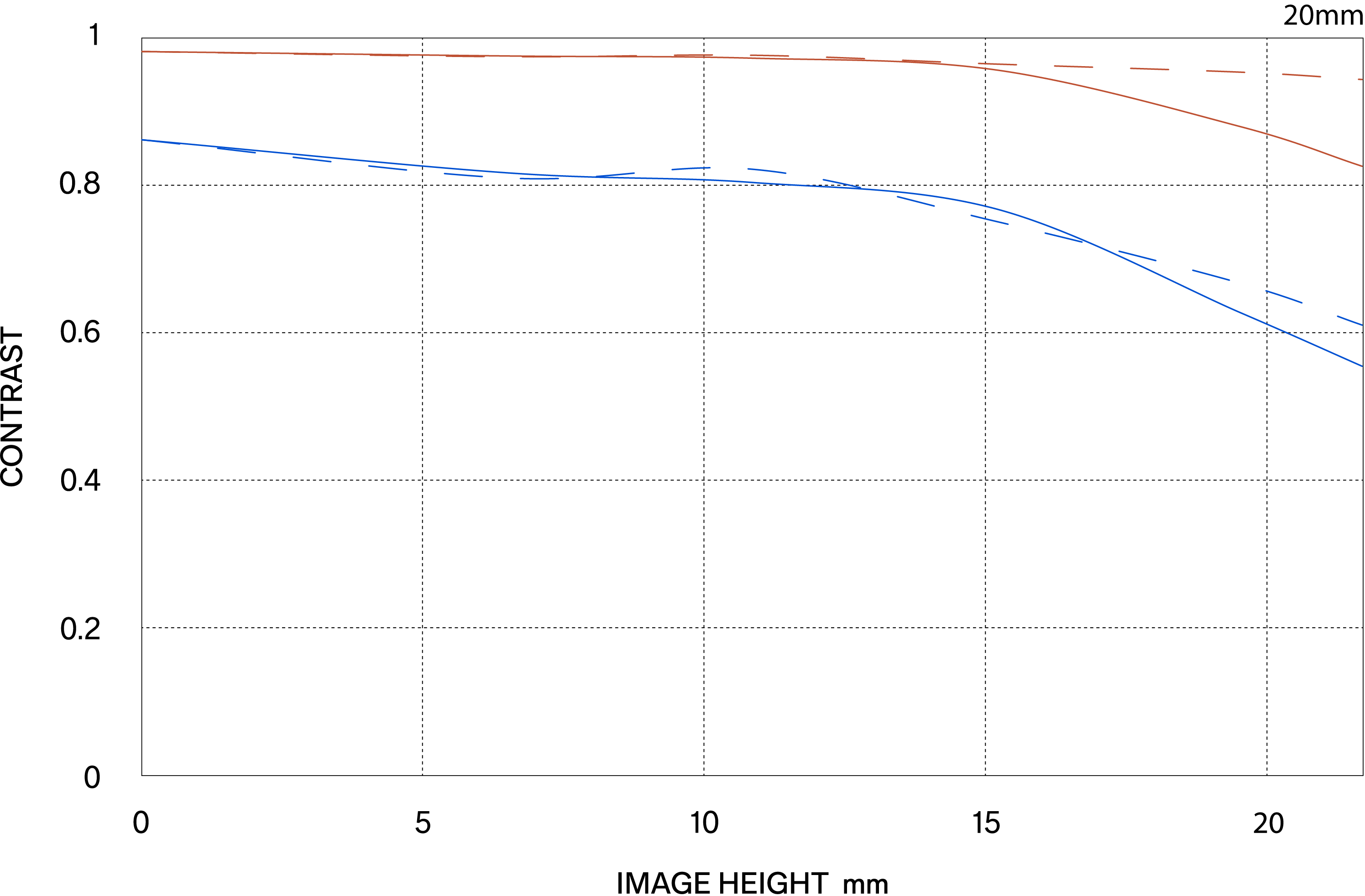

Inner focus system
To increase stability, this lens configuration uses movable internal lens elements that adjust focus without changing the length of the lens barrel.
Stepping Motor
The lens is capable of smooth, quiet and high-speed AF made possible by a stepping motor, as well as supports Face/Eye Detection AF and video AF.
Nano Porous Coating
The super multi-layer coating is combined with SIGMA's unique coating technology "NPC (Nano Porous Coating)". The lens has been designed to be less susceptible to strong incident light such as backlight.
"NPC (Nano Porous Coating)" incorporates porous silica as the coating material. The porous silica layer has nano-sized holes with air inside. Having holes of this size enables a large reduction in the refractive index, allowing the reflectance to be lowered more than conventional anti-reflective coatings. As a result, reflected light causing flares and ghosting is sharply reduced, achieving clear image quality.
Super Multi-Layer Coating
SIGMA's own Super Multi-Layer Coating suppresses flare and ghosting by preventing reflections with in the lens. All lenses in the current SIGMA range feature this original technology. In digital cameras, flare and ghosting may also be caused by reflections between the image sensor and lens surfaces. Here too, SIGMA's Super Multi-Layer Coating is highly ef fective, assuring images of outstanding contrast.
Aperture ring
Aperture ring, designed to help users work intuitively
Focus Mode Switch
Using this swich, it is possible to switch the focus mode between AF and MF.
Linear focus / Non-linear focus (for L-Mount only)
A focus movement method of interchangeable lenses for mirrorless cameras (DN lens) in relation to the rotational angle of the focus ring during manual focusing.
With "non-linear focus," the amount of focal point movement varies depending on the focus ring rotational speed.
With linear focus, if the focus ring rotational angle is the same, the amount of focal point movement remains the same regardless of the focus ring rotational speed.
Mount with Dust and Splash Resistant Structure
The lens mount incorporates rubber sealing to protect the mount from dust and water drops.
Compatible with Lens Aberration Correction
Matching the optical characteristics of the lens, this function performs in-camera corrections of peripheral illumination, chromatic aberrations, distortion, and more, to further enhance image quality.
*Function available on supported cameras only. Available corrections or auto correction functionality may vary depending on the camera model.
*On cameras where lens aberration correction is controlled with 'ON' or 'OFF' in the camera menu, please set all aberration correction functions to 'ON'(AUTO).
Lens construction: 13 elements in 11 groups, with 1 FLD, 1 SLD and 3 aspherical lens elements
Compatible with high-speed autofocus
Support DMF and AF+MF
Petal-type lens hood(LH656-03)
Magnetic metal lens cap(LCF62-01M)
Compatible with SIGMA USB DOCK UD-11 (sold separately / for L-Mount only)
Designed to minimize flare and ghosting
Every single lens undergoes SIGMA’s proprietary MTF measuring system
9-blade rounded diaphragm
High-precision, durable brass bayonet mount


